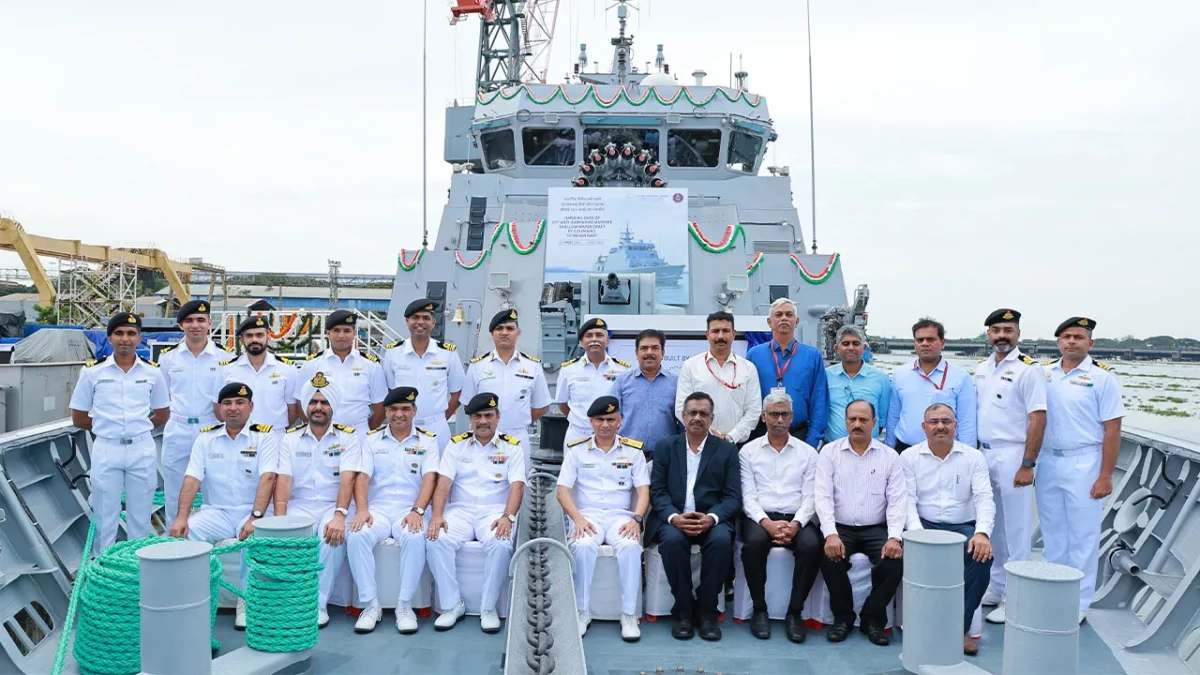Context:
Cochin Shipyard Ltd (CSL) has officially delivered the first of eight Anti-Submarine Warfare Shallow Water Craft (ASW SWC) of the Mahe-class to the Indian Navy.
About Mahe:
The contract for eight vessels (the Mahe-class) between the Ministry of Defence and CSL was signed on 30 April 2019.
The intended delivery schedule for all eight is between August 2025 and June 2028 (per publicly reported timeframe).
Design, Role & Features:
The Mahe-class is designed to replace the older Abhay‑class ASW corvettes of the Indian Navy, particularly for shallow/littoral water anti-submarine warfare, mine-laying, surveillance, search & rescue (SAR) and low-intensity maritime operations (LIMO).
· Specifications: length ~78 m, displacement ~900 to ~1,100 tons (depending on source) for the CSL variant. Speed up to ~25 knots. Endurance cited at ~1,800 nautical miles in CSL press materials.
· Propulsion: Noteworthy is the use of a diesel engine–waterjet combination, enhancing shallow water manoeuvrability.
· Indigenous content: High – over 80 % indigenous content is repeatedly mentioned for the Mahe-class.
About Anti-Submarine Warfare Shallow Water Craft:
The ASW-SWC class (“Anti-Submarine Warfare Shallow Water Craft”) is a new class of shallow-water corvettes being built for the Indian Navy, by two shipyards: Cochin Shipyard Ltd. (CSL) and Garden Reach Shipbuilders & Engineers (GRSE).
· The target number is 16 vessels in total (8 built by GRSE, 8 by CSL).
· Length is about 77–78 m, width around 10.5 m for the GRSE version (“Arnala-class”). For the CSL version (“Mahe-class”) similar dimensions are cited.
· Propulsion: Diesel engines combined with water-jets, giving good shallow-water performance and maneuverability.
· Speed: Approximately 25 knots in shallow/littoral waters.
Strategic Significance:
Enhances Indian Navy’s littoral/near-shore ASW capability, crucial in the Indian Ocean Region where submarine activity (including from adversaries) is increasing.
· Replaces older platform (Abhay-class) with more modern, agile, indigenous ships.
· High domestic content aligns with India’s self-reliance goal in defence manufacturing.
· Adds flexibility: these vessels can undertake not only ASW but mine-laying, surface/air defence and SAR in coastal zones.
Conclusion:
The successful delivery of Mahe paves the way for the induction of seven more ASW SWCs, each equipped with advanced features to counter emerging maritime challenges. As India continues to strengthen its naval capabilities, the Mahe and its sister ships will be at the forefront of the nation's maritime defense strategy.







